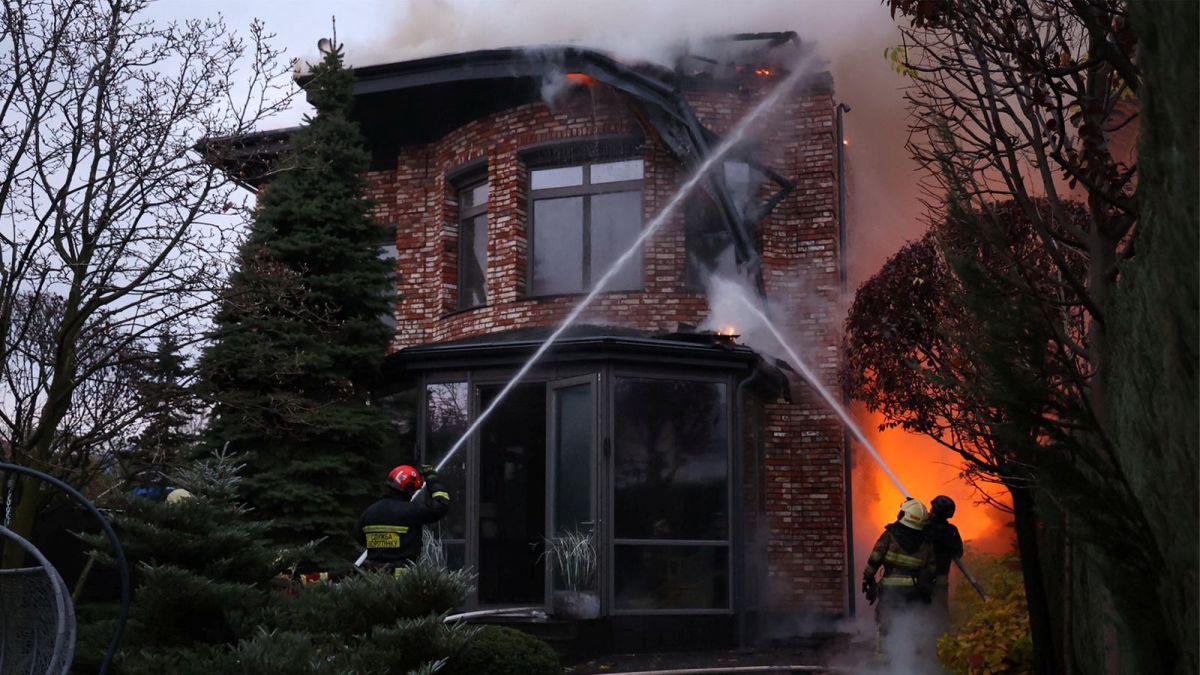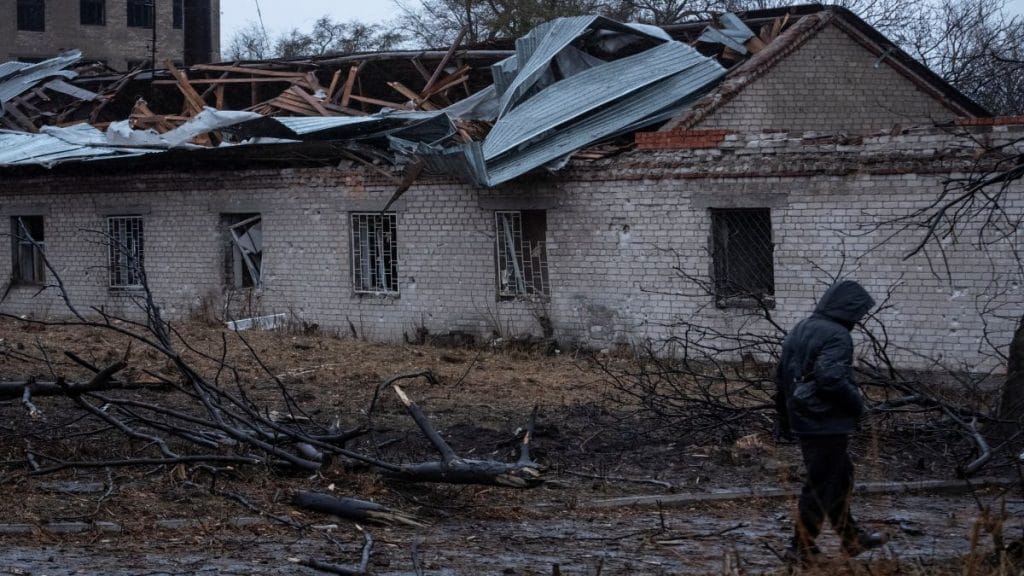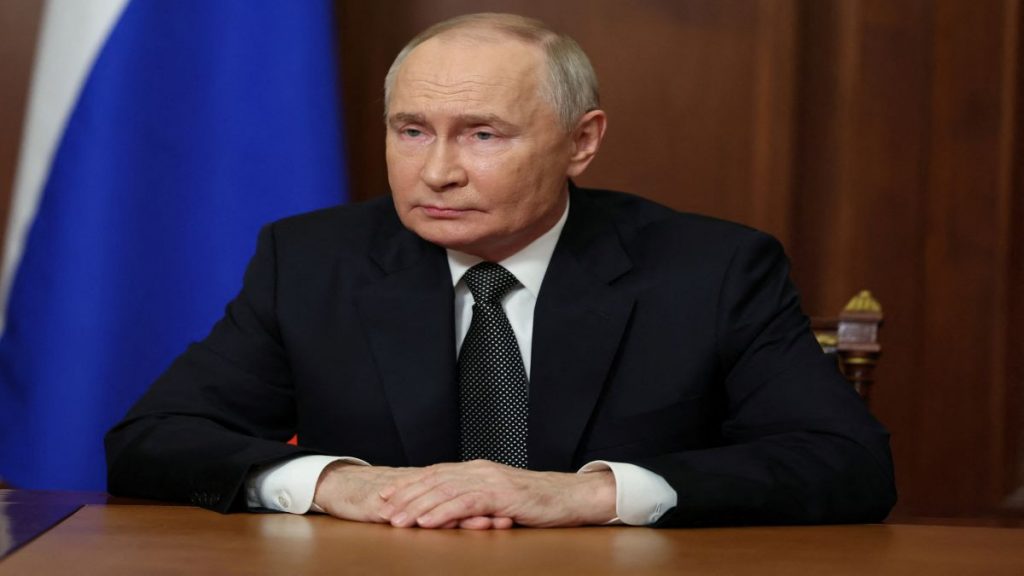Not an ICBM: What is the Oreshnik ballistic missile that Russia fired ...
read more
)
Firefighters work at the site of a Russian missile strike, amid Russia's attack on Ukraine, in Dnipro, Ukraine November 2. Press service of the State Emergency Service of Ukraine in Dnipropetrovsk region/Handout via Reuters
The Russia-Ukraine war has gone ballistic, quite literally.
On Thursday (November 21), after Ukraine accused Russia of firing a longer-range intercontinental ballistic missile (ICBM) — a first during this long war — Russian President Vladimir Putin in an address to his countrymen and the world confirmed that Moscow had fired an experimental ballistic missile at a military site in the Ukrainian city of Dnipro. He further stated that Russia had “the right” to strike Western countries that provided Ukraine with weapons.
The Russian strike prompted Ukrainian President Volodymyr Zelenskyy to react, saying on Telegram, “This is an obvious and serious increase in the scale and brutality of this war.” He added that this missile strike was also proof that “Russia definitely does not want peace.”
Zelenskyy also urged the world to take action against Putin, “The world must react. Right now there is no strong reaction from the world. You have to react. We must squeeze. It is necessary to urge Russia to a true peace, which is possible only through force. Otherwise, there will be relentless Russian strikes, threats and destabilisation, and not only against Ukraine.”
As the war heats up, we take a closer look at what exactly this new missile that Russia used and what its use means for this conflict.
On Thursday morning (November 21), in an escalation of the Russia-Ukraine war, Russia fired a missile on the Ukrainian city of Dnipro. This comes after Kyiv fired US-supplied ATACMS weapons deep into Russia on Tuesday and followed it up with using UK-made Storm Shadow missiles.
Shortly after Russia’s strike, Ukraine’s air force claimed Russia had fired a longer-range intercontinental ballistic missile (ICBM). At the time, Ukraine’s President Zelenskyy said, “Today, our crazy neighbour has once again shown who he really is and how he despises dignity, freedom and human life in general. And how afraid he is.”

However, some experts questioned if Russia had, in fact, used an ICBM against Ukraine. They noted that the weapon fired appeared to have been a shorter-range ballistic missile (SRBM) — not an ICBM. For instance, Mark Cancian, a senior adviser at the Center for Strategic and International Studies, believed it was not an ICBM. He told BBC that based on the footage of the strike it may have been carried out using a shorter-range ballistic missile, which travel at a lower trajectory than ICBMs. “The videos strongly suggest a ballistic missile because of the angle of fall,” Cancian said. “There’s nothing in them that requires the missile to be an ICBM.”
A resident walks at the site of a Russian missile strike, amid Russia’s attack on Ukraine, in Dnipro, Ukraine. ReutersSome even pointed out that using an ICBM was an expensive move for Russia. “My take is that one must be sceptical and cautious,” wrote weapons expert Pavel Podvig, director of the Russian Nuclear Forces Project.
Speaking to CNN, two officials also said that it wasn’t an ICBM, but a shorter-range ballistic missile owing to the distance it travelled and its payload.
As experts continued to discuss what type of missile Russia had fired, Vladimir Putin surprised all by giving a televised address in which he stated that Moscow used a “new” intermediate-range ballistic missile.
The new ballistic missile was called Oreshnik [the hazel], Putin said, saying it was capable of Mach 10 — 10 times the speed of sound. He added that there were no means of counteracting such a weapon. “Modern air defence systems and US systems in Europe cannot intercept such missiles. It is impossible.”
He further said in an address, “Tests of the ‘Oreshnik’ missile system in combat conditions are being conducted by us as a response to the aggressive actions of Nato countries against Russia.”
Later, Sabrina Singh, the Deputy Pentagon Press Secretary, described the Oreshnik as a variant of Russia’s RS-26 ballistic missile. The RS-26 is a 40-tonne, solid-fuelled missile.
Pentagon:
- Russia's experimental intermediate-range ballistic missile launched at Ukraine was based on the RS-26 Rubezh ICBM model;

- The US was notified by Russia about the launch briefly before it occurred through nuclear risk reduction channels. pic.twitter.com/a9bq8e8IZ3
Forbes explains that depending on the angle at which it’s fired, the RS-26 could travel slightly more than 3,400 miles. That would make it an ICBM. But it’s more comfortably an IRBM that ranges fewer than 3,400 miles.
The RS-26 itself is reportedly a smaller derivative of the RS-24 Yars ICBM. Rubezh is also understood to have a multiple independently targetable reentry vehicle (MIRV) configuration.
Speaking on the same, Fabian Hoffmann, a doctoral research fellow at Oslo University who specialises in missile technology and nuclear strategy, told The Guardian that the significance of the Oreshnik missile strike was that it appeared to carry a type of payload that “is exclusively associated with nuclear-capable missiles”.
Russian President Vladimir Putin makes a televised address confirming the launch of a hypersonic intermediate-range ballistic missile attack in Ukraine’s Dnipro. ReutersHow did the world react?After Putin’s address, the world reacted with shock. The United Nations said it was a “worrying development” amid the war. “This is yet another concerning and worrying development. All of this (is) going in the wrong direction,” said Stephane Dujarric, the spokesman for UN Secretary-General Antonio Guterres, calling on all parties to de-escalate the conflict.
He repeated UN chief Antonio Guterres’ call for an end to the war in compliance with international law, and urged both sides “to protect civilians, not hit civilian targets or critical civilian infrastructure”.
The White House also said that Russia was “escalating the war at every turn”. “The escalation at every turn is coming from Russia,” said White House spokeswoman Karine Jean-Pierre.
“They (Russia) are the ones escalating. We are going to continue to support Ukraine as they push back on that aggression,” she said.
Meanwhile, Nato spokesperson Farah Dakhlallah was quoted by CNN as saying that Russia’s use of a new, medium-range ballistic missile to strike Ukraine will not affect the course of the war.
“Deploying this capability will neither change the course of the conflict nor deter NATO allies from supporting Ukraine,” Dakhlallah said, calling the launch “yet another example of Russia’s attacks against Ukrainian cities.”
What is Russia’s message through the ‘new’ missile?Most experts are also of the opinion that Russia’s use of the Oreshnik is more at sparking attention. Heloise Fayet, a researcher at the French Institute of International Relations (IFRI), told AFP, “We are really on something unprecedented, and it is much more a political act than a military act. The cost-effectiveness ratio of the attack is zero.
“This change of scale is significant," she said, adding this was “the first use by the Russians on the battlefield of a missile with a range greater than 2,000 kilometres.’ But the use of this missile “will not change the situation significantly on the operational level. They obviously have very few and they are expensive.”
Nick Brown of Janes, a British defence analysis organisation, agreed with this observation. He said that “this is really about sending an escalatory message or warning, an expensive and potentially dangerous way for Russia to rattle its sabre”.
“Russia may be seeking to use this capability to try to intimidate Ukraine and its supporters… but it will not be a game changer in this conflict,” he said.
With inputs from agencies
End of Article













































